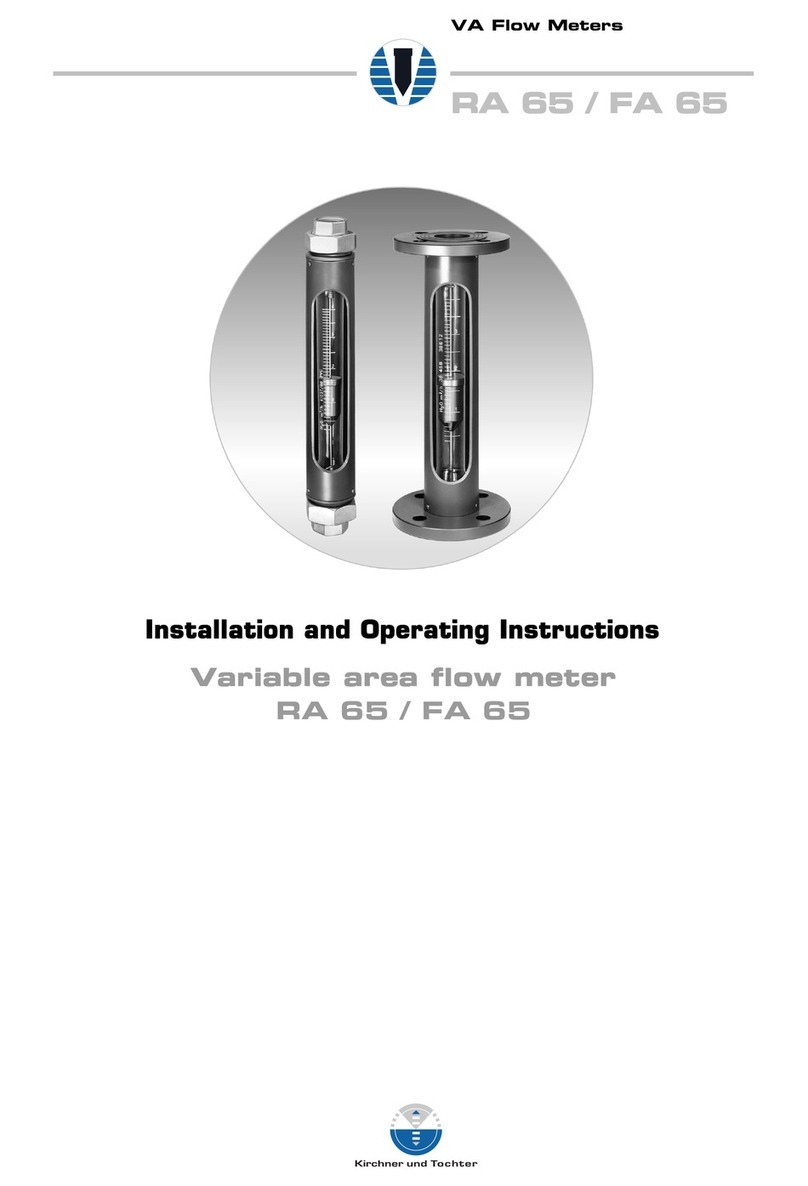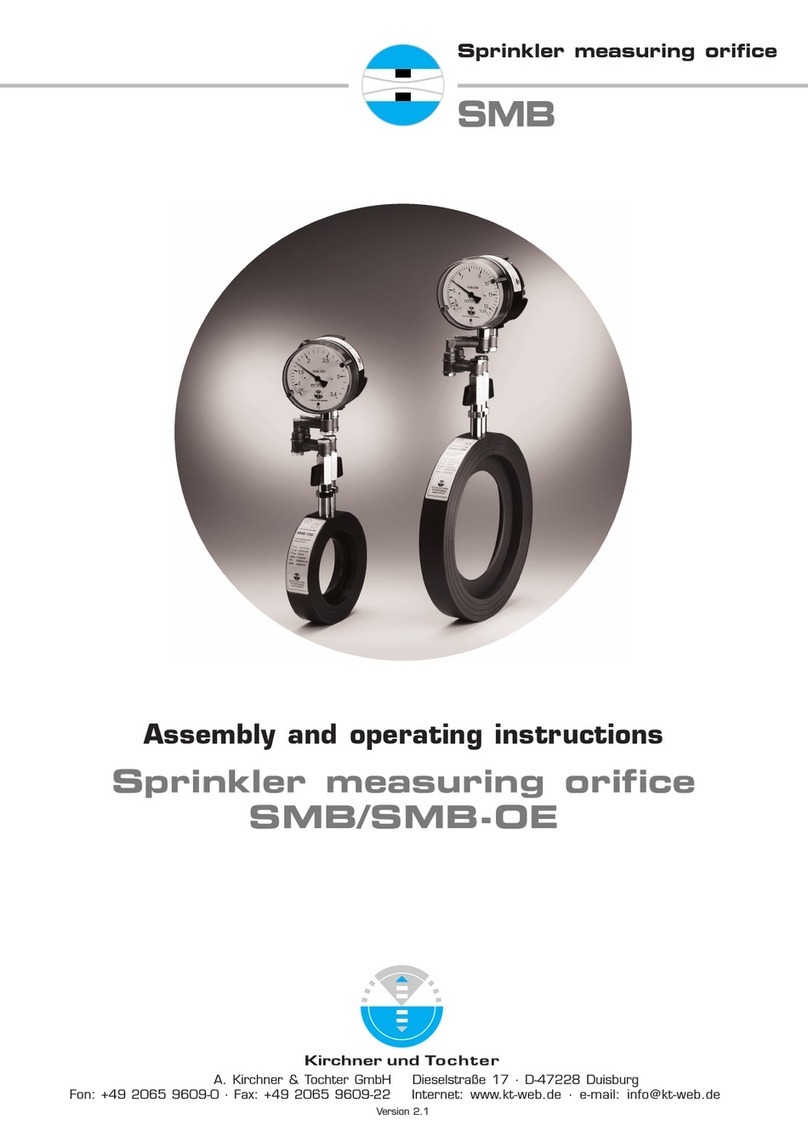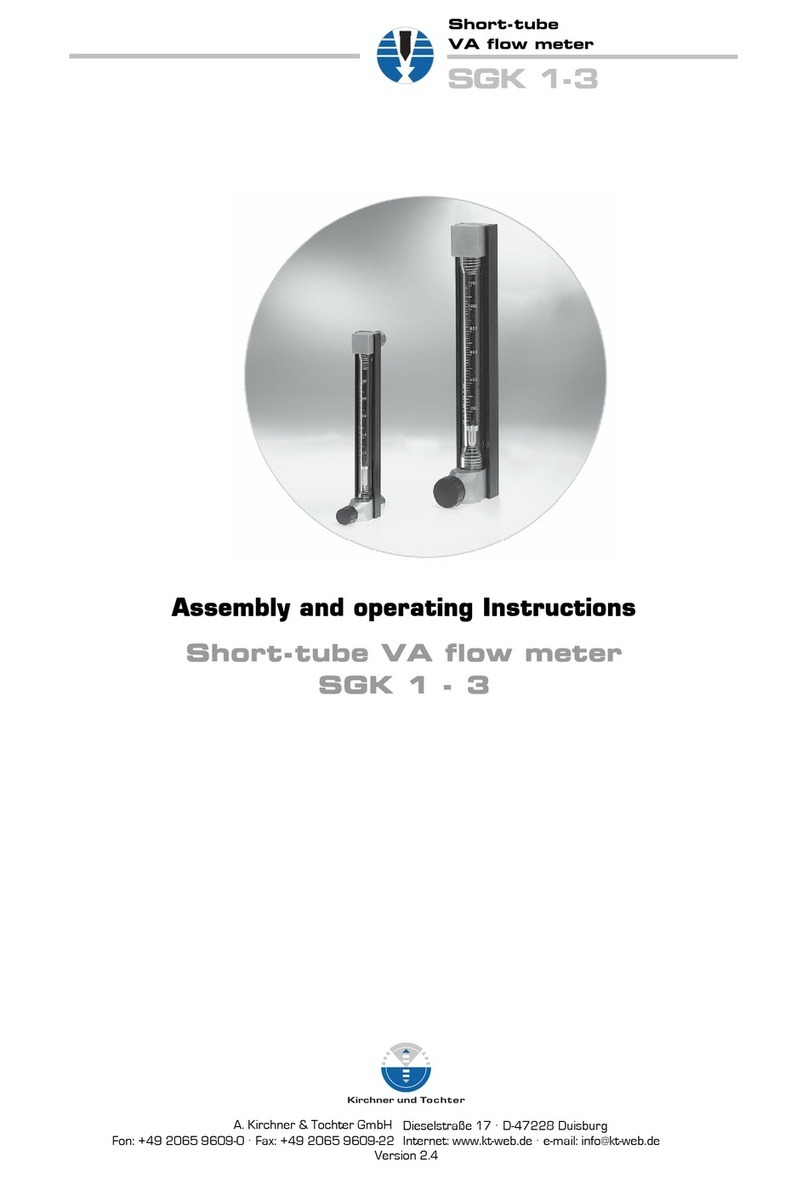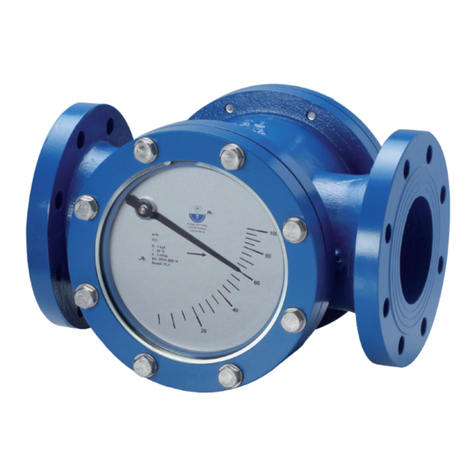
Version 2.2
Dieselstraße 17 · D-47228 Duisburg
Internet: www.kt-ow.de · e-mail: info@kt-ow.de
A. Kirchner & Tochter GmbH
Fon: +49 2065 9609-0 · Fax: +49 2065 9609-22
-2-
Contents
1 Foreword ................................................................................................................3
2 Safety .....................................................................................................................3
2.1 Symbol and meaning ....................................................................................3
2.2 General safety directions and exemption from liability..................................3
2.3 Intended use .................................................................................................4
2.4 Special safety instructions concerning glass devices ...................................4
2.5 Information for Operator and operating personnel ........................................4
2.6 Regulations and guidelines ...........................................................................4
2.7 Notice as required by the hazardous materials directive ..............................5
3 Transport and storage ............................................................................................5
4 Installation ..............................................................................................................6
4.1 Work preparatory to installation ....................................................................6
4.2 Preparation of the measuring device ............................................................6
4.3 Installation RA 60 ..........................................................................................7
4.4 Installation FA 60 ..........................................................................................7
5 Start-up...................................................................................................................8
6 Readings in operation.............................................................................................8
7 Limit switches MSK1/MSK12/MSKW .....................................................................9
7.1 Connection of limit switches..........................................................................9
7.2 Setting the limit switches.............................................................................10
8 Linear displacement sensor 4 .. 20 mA/0 ... 10V..................................................11
8.1 Connection of the linear displacement sensor ............................................11
8.2 Adjusting the sensor....................................................................................12
9 Maintenance and cleaning of the ow meter ........................................................13
9.1 Dismantling the glass cone RA 60 ..............................................................13
9.2 Assembling the glass cone RA 60...............................................................14
9.3 Replacement of the glass cone RA 60 ........................................................14
9.4 Dismantling of the glass cone FA 60 ...........................................................15
9.5 Installation of the glass cone FA 60.............................................................15
9.6 Replacement of the glass cone FA 60.........................................................15
9.7 Subsequent installation of a oat catcher protective cap ............................16
10 Service..................................................................................................................18
11 Disposal................................................................................................................18
12 Technical data.......................................................................................................19
12.1 Materials......................................................................................................19
12.2 Measuring ranges .......................................................................................20
12.3 Dimensions .................................................................................................21
12.4 Limit value switches MSK1/MSK12/MSKW ................................................24
12.5 Right angle plug M12 x 1 ............................................................................25
12.6 Linear displacement sensor ........................................................................26
12.7 Low-Voltage Directive .................................................................................27



































